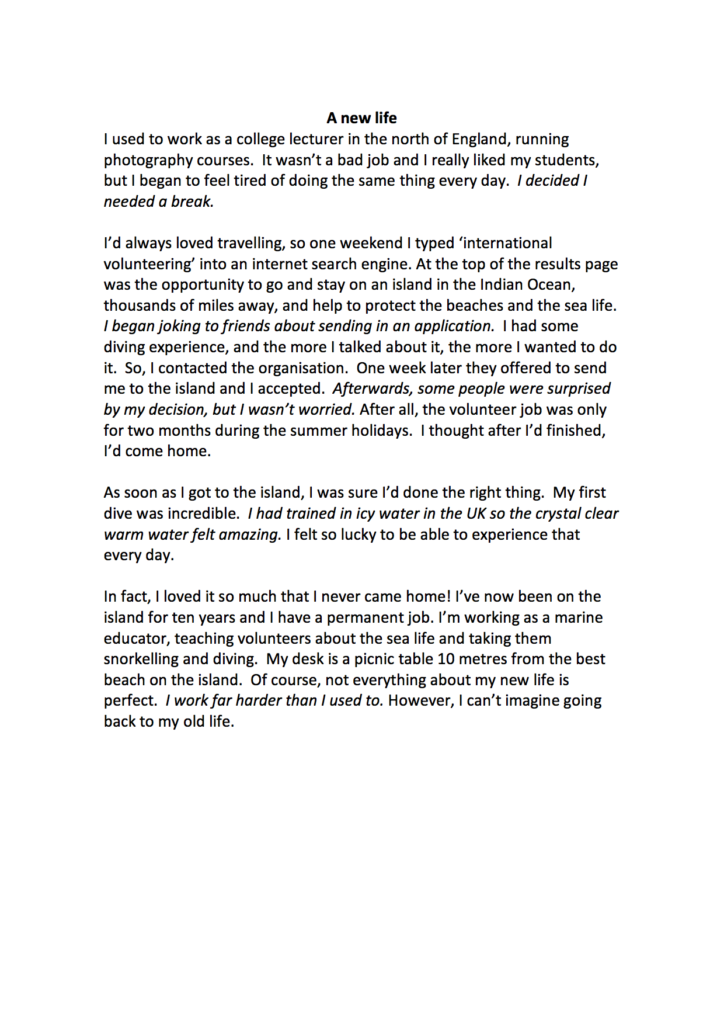Approaching a new (exam) task
When you’re preparing students for an exam, there will be tasks which will be new to them and may seem unrelated to real life.
You don’t normally read a news story or article and answer multiple choice questions about it!
Or listen to a talk and write words to.complete sentences about it!
There are two things that I would recommend when we’re using texts, audios or speaking and writing activities.
-
Relate it to real life
In Part 2 of the B1 Preliminary Speaking Test, students have to talk about a photograph for one minute.
How does this relate to real life?
Well, sometimes in real life, we need to describe a person. If you’re doing me a favour and picking up my friend at the station or airport for me, then you’ll need to know what they look like, won’t you? The more details I can give you, hopefully, the quicker you’ll recognise my friend.
Imagine you were going to ask students to describe this photo for B1 Preliminary Speaking Part 2.

It has lots of detail, which is great because there are lots of things to say. But how can we get students to relate this task to real life?
Change the context. Your students went to this antiques fair recently and now they want to buy those green glasses they saw. They have the owner’s business card, so they ring them and describe where they saw one of the glasses, because they have this photo.
Discuss how we also need to describe things in detail in other situations, like:
- When we ask someone to pick a friend up from the airport/station and they don’t know what your friend looks like.
- When we can’t remember the name of a restaurant or hotel we liked and want to go back. We can describe it to someone we went with or someone who might know it and hopefully, they can remember the name of the place.
2. Approach the task gradually
In a previous post, I discussed how, when we do a task for the first time with students, it’s useful to start from the completed task. That way, students can see what their finished task should look like.
If we don’t do this, then students may feel overwhelmed, that the task is too difficult for them.
Here is the task from the B1 Preliminary for Schools Handbook for Reading Part 4. Students have to choose 5 sentences from the 8 provided and find the right place in the text for each one. In my experience, students find this difficult and it helps to see the whole text, then remove the sentences, and see that there are 3 extra sentences that don’t ‘fit’ anywhere.

In real life, we don’t usually have to reinsert sentences into a text, but we might have to edit a piece of writing, to avoid repetition of words, make it easier to read/more suitable in style, etc.
For more ideas on relating exam tasks to real life, you might find these posts on Encouraging students to ‘wonder’. or Different, non-exam things to do with any text.

